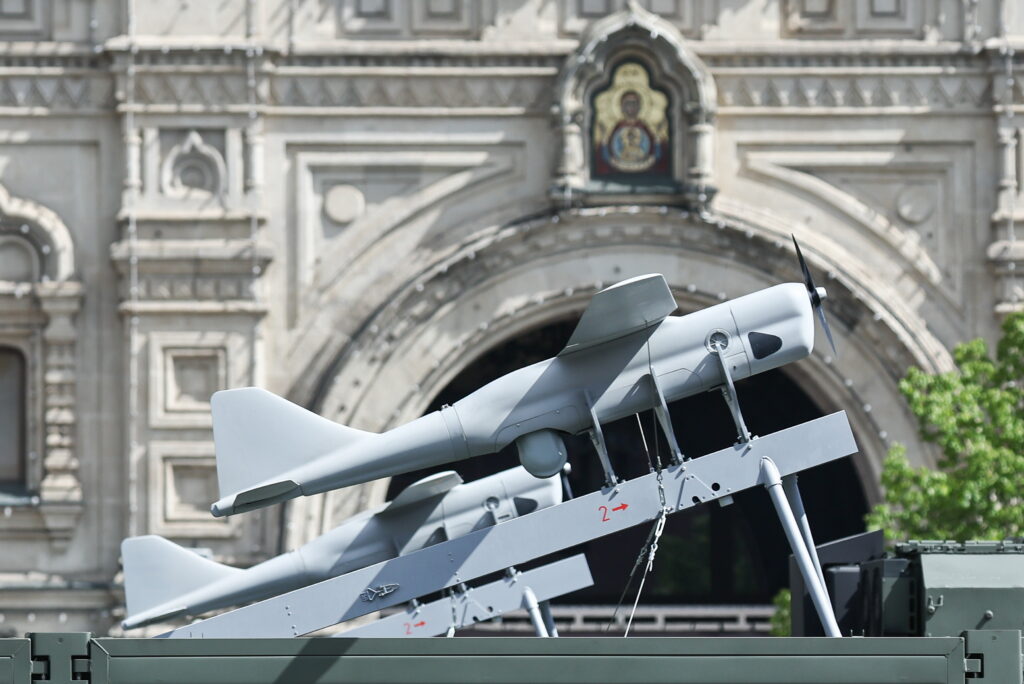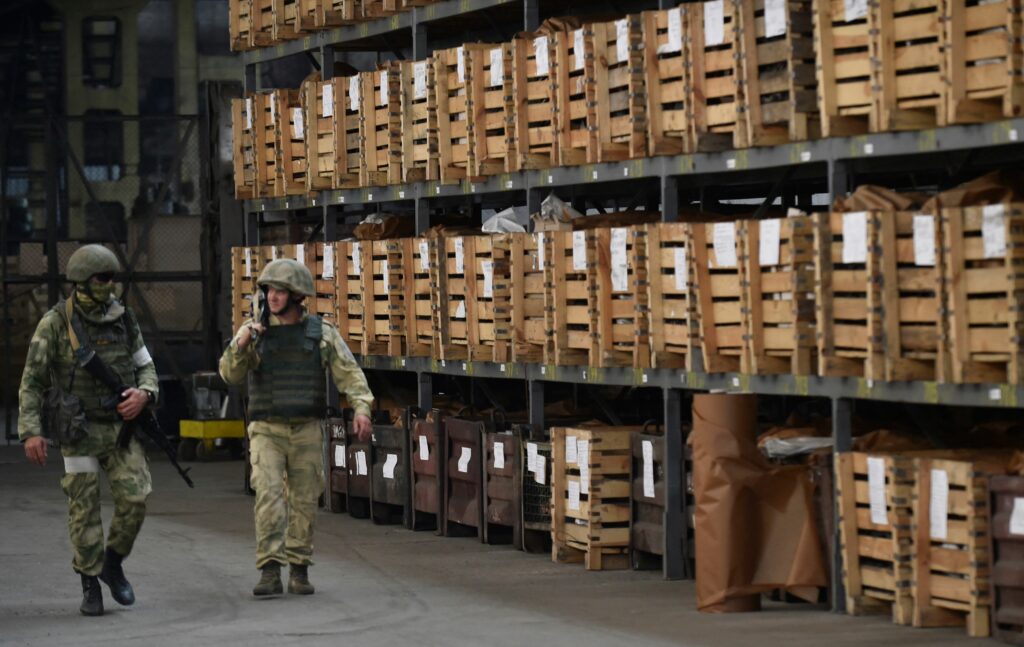Russia’s military industrial complex ends the decade in a truly deplorable state. From 2011 to 2019, it fulfilled an order from the Russian state worth 13 trillion rubles ($270 billion by average annual rates) and supplied arms and other military equipment worth about $135 billion to several other countries. By mid-2019 it has accumulated around 700 billion rubles of bad debts (more than $10 billion). Between 2016 and 2017, the Russian government already had to repay the military industry’s loan obligations to Russian banks, and those debts were not small — they amounted to a trillion rubles (over $15 billion). In other words, these companies still generate huge losses, apparently regardless of how much money the Kremlin — or any other government — throws at them to purchase weapons.
That will not be the last time the Russian state has had to bail out the country’s defence industry. In 2019, the total debt of Russia’s military industrial complex came to two billion rubles (about $31 billion). Furthermore, since last year the management of Rostec has been asking the Kremlin for an additional 300 billion rubles ($4.6 billion) to prop up its subsidiary, the United Aircraft Corporation. These demands come at a very bad time — given Russia’s ongoing economic stagnation, the country’s rulers have been taking a long and hard look at the prospects for their self-preservation. That means that the current state of affairs in the military industry has not only economic, but political significance.
No return to 2016
Over the past decade, the peak of the Russian state’s “national defence” expenditure came in 2016. That year, these expenditures amounted to almost 3.8 trillion rubles ($56 billion). This huge sum can be explained by the state’s need to repay loans given to the military industries by banks under government guarantees, which amounted to 800 billion rubles. In 2017, a further 200 billion rubles was allocated for the same purpose. Nevertheless, these extraordinary measures did not compel these state-owned enterprises to reconsider their approach. So, unsurprisingly, in 2019 the situation with bad debts repeated itself. At the very beginning of 2020 the required amount (or at least a large part of it) was allocated from the budget by a closed decree of Vladimir Putin. In any case, there is no doubt that the accumulated bad debts of defense companies will be repaid by the government in favor of state banks or banks affiliated with Vladimir Putin’s entourage. There are as yet to signs that these repayments will actually help to improve the functioning of Russia’s military industries.
As a result, the Russian government will continue to take such steps at the expense of the country’s taxpayers. The current level of state expenditure on the purchase of weapons and military equipment — about 1.5 trillion rubles a year — is simply not sufficient to keep defence companies afloat on its own. In this regard, it is worth taking a look at the financial statements of some of Russia’s leading defence companies over the last few years (2014-2018):
 The data above demonstrate that a growth in revenue — mostly provided by state orders for weaponry, military equipment, research and development, some civilian products, and export contracts — almost always leads to an increase in Russian military companies’ debts. These injections of cash do almost nothing to increase their profitability. What we are witnessing is the systematic rise in the cost of supporting Russia’s military industries alongside the constant generation of new financial losses. And as soon as some companies manage to stabilise their position, once the Russian government has paid off their debts and provided them with new contracts, the condition of others starts to deteriorate again. It seems as though the Kremlin has learnt to balance this system by using periodic injections of large amounts of cash at the expense of Russian citizens. This approach follows the model of 2016, and will likely be continued throughout the 2020s.
The data above demonstrate that a growth in revenue — mostly provided by state orders for weaponry, military equipment, research and development, some civilian products, and export contracts — almost always leads to an increase in Russian military companies’ debts. These injections of cash do almost nothing to increase their profitability. What we are witnessing is the systematic rise in the cost of supporting Russia’s military industries alongside the constant generation of new financial losses. And as soon as some companies manage to stabilise their position, once the Russian government has paid off their debts and provided them with new contracts, the condition of others starts to deteriorate again. It seems as though the Kremlin has learnt to balance this system by using periodic injections of large amounts of cash at the expense of Russian citizens. This approach follows the model of 2016, and will likely be continued throughout the 2020s.
Not only do Russia’s defence companies exist outside conventional market rules, but since 2014 they have actually been severed from opportunities for international cooperation. In addition, their financial statements clearly show that they have no resources of their own to invest in new products and technologies. In fact, it would now be fair to say that Russia’s defence industry in its current form has entirely lost the ability to develop. Therefore, repayment of the next portion of the industry’s debts, which were made at the expense of the 2016-2017 budget and will be made in 2020, does not diminish the likelihood of an avalanche of growing financial losses for the sector over the next three to five years.
The Princes of Planning
The constitutional upheaval currently underway in Russia also concerns the country’s military-industrial complex. The newly appointed prime minister has already declared the military industry to be one of his top priorities. Former Prime Minister Dmitry Medvedev will also oversee military production in his newly created position on the Security Council. It is important to remember here that state administration of the defence industry has been a convoluted mix of overlapping remits ever since the 2010s. This hierarchy includes roles for both the deputy prime minister, who has oversight of special colleges and commissions, as well as the deputy defence minister for the military industrial complex. Military representatives are present at defence enterprises, as are countless FSB officers in various positions. The Ministry of Industry and Trade operates multi-billion dollar programmes in the field, while the Federal Anti-Monopoly Service acts as the chief arbiter of all state defence orders. The state development corporation Vnesheconombank plays a prominent role, as of course do the top management boards of state corporations and sometimes governors of the regions where the enterprises are located.
An important regulation in this process is the federal law “on state defence orders” (N275-F3). Alongside other political decisions, this law essentially ensured that Russia’s military industries would end up in the economic doldrums. Upon closer observation, it seems as though the Russian authorities are aware that there are two ways out of this situation. Either the authorities could simply push the military-industrial complex into the sphere of normal market competition, a step which was never taken in the 1990s or 2000s, and would require a great deal of political will. The second option is to go back to the drawing board and create a new model of administrative planning which would go far beyond the military-industrial complex. At the very end of 2019, some evidence came to light which suggests which option the authorities might take.
Firstly, on 27 December 2019, the aforementioned law was amended, making the nationalised Promsvyazbank the base bank for Russia’s military industrial complex. The idea to found such a ban arose in 2017, against a backdrop of strengthening US sanctions against Russia. Moscow then took steps to remove key players in the Russian banking sector — Sberbank, VTB, Gazprombank and others — from the line of fire. Interestingly, the government has now decreed a minimum amount of defence contracts which companies are obliged to conduct via Promsvyazbank, and can also contractually oblige military companies to use only this bank. A likely consequence of this move is that these enterprises will receive more favourable access to credit at special prices, as close as possible to rates offered by the Central Bank. Essentially, the new Promsvyazbank will be a non-market bank for what is a non-market sector. This might also allow the state to compensate the military industrial complex for its losses through other budgetary streams — without publicly inflating its defence and security expenses.
Secondly, the amendment is merely the first step in a deeper revision of N275-F3. The primary motive is to loosen the working conditions of defence companies and individual factories, particularly when it comes to cash transactions at various stages along the manufacturing chain. At the same time, it aims to improve these enterprises’ control over their own livelihoods. One proposal involves the creation of a new information system that would give the authorities real time control over pricing mechanisms during the production of military products. This function, which involved setting large scale production plans and prices for products, was the role of the State Planning Commission during the Soviet period. At the time, attempts were also made to computerise this gargantuan planning operation, but with little success. The flaw in this illusory plan is that the Kremlin has also set the military-industrial complex the task of increasing the output of products for civilian use, and is ready to guarantee a demand for them through administrative means. Under these conditions, the temptation to return to a command economy will intensify — can Russia’s leaders resist it?










